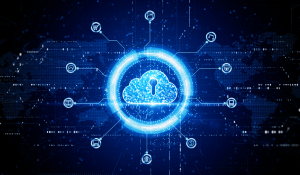What Is The Purpose Of A Secure Digital Vault?

In today's digital age, the need to safeguard sensitive information has never been greater. As the world increasingly relies on digital technology, the importance of Secure Digital Vaults has grown significantly. This article will explore safe digital vaults' purpose, components, and examples.
What is a Secure Digital Vault?
A Secure Digital Vault, also known simply as a digital vault, is a highly secure storage solution designed to protect and manage sensitive data and digital assets. These vaults employ advanced encryption and authentication measures to ensure that only authorized individuals can access the stored information.
A secure vault storage serves as a virtual fortress for valuable digital assets. It is designed to address the growing concerns surrounding data privacy and security in an era where information is constantly at risk of unauthorized access, theft, or manipulation. These vaults go beyond simple password protection; they employ complex encryption algorithms, access controls, and monitoring mechanisms to create layers of defense around stored data.
It provides peace of mind to individuals, businesses, and organizations that deal with sensitive information. This can include financial institutions safeguarding customer data, healthcare providers protecting patient records, or individuals securing personal documents and passwords. Users can mitigate the risks associated with data breaches, identity theft, and cyberattacks by utilizing a digital vault.
The Purpose of Secure Digital Vaults
The primary purpose of a Secure Digital Vault is to provide a safe and secure environment for storing and managing valuable digital assets. These assets range from important documents and financial records to cryptographic keys and sensitive personal information. The key objectives of a Secure Digital Vault are:
1. Data Protection:
Secure Digital Vaults are paramount in ensuring data protection. They are a robust barrier against unauthorized access, ensuring that only individuals with the appropriate permissions can view, modify, or delete sensitive information. This level of protection is especially crucial in today's digital landscape, where cyber threats loom large.
By employing advanced encryption methods, a secure vault encrypts data before storing it. This means that even if a hacker were to breach the outer defenses, they would be met with a virtually impenetrable wall of scrambled data. With the proper decryption key, the information remains intelligible, effectively safeguarding it from prying eyes.
2. Confidentiality:
Maintaining the confidentiality of stored data is another critical aspect of Secure Digital Vaults. They are designed to prevent data breaches and leaks that could have severe consequences for individuals and organizations. Confidentiality means that sensitive information remains private and protected, even in the face of determined attackers.
Secure Digital Vaults accomplish this by not only encrypting data but also by implementing stringent access control mechanisms. Only authorized users with the credentials and permissions can access the vault's contents. Limiting access to trusted individuals significantly reduces the risk of data exposure or leaks.
3. Data Integrity:
Data integrity is a fundamental component of secure digital solutions. These vaults ensure that the data stored within them remains unchanged and unaltered by unauthorized parties. Tampering with data can have dire consequences, leading to misinformation, fraud, or security breaches.
To maintain data integrity, most secure vaults often use cryptographic hashing. This process generates unique hashes for each piece of data, and any alteration to the data would result in a different hash. This way, users can verify that their data has not been tampered with by comparing the stored hash with a newly generated one.
4. Availability:
Secure Digital Vaults are not just about locking data away; they also ensure authorized users can access their data when needed. This is essential for business continuity and personal convenience. In cases of emergency or routine access, users should have seamless access to their stored information.
Electronic vaults are often hosted on redundant and resilient infrastructure to guarantee availability. This means that even in the face of hardware failures or unforeseen circumstances, data remains accessible. Access control policies are also carefully designed to balance security with ease of use, ensuring that legitimate users can retrieve their data without unnecessary obstacles.
Components of a Secure Digital Vault
A Secure Digital Vault comprises several essential components that provide robust security. Let's explore these components:
-
Encryption Mechanisms
Encryption is a cornerstone of online vaults. These vaults employ advanced encryption algorithms to ensure the confidentiality and integrity of stored data. Encryption involves converting plaintext data into ciphertext using a complex mathematical algorithm and a unique encryption key.
The result is that data within the vault becomes unreadable without the correct decryption key, effectively protecting it from unauthorized access. Even if an unauthorized user gains access to the vault's storage, the data remains secure, as deciphering the information without the encryption key is nearly impossible.
Encryption mechanisms include symmetric encryption (using the same key for encryption and decryption) and asymmetric encryption (utilizing a public-private key pair). The choice of encryption method depends on the specific security requirements of the digital vault and the nature of the data being protected.
-
Authentication and Access Control
Authentication mechanisms are critical to secure the vault, as they ensure that only authorized users gain access to the vault's contents. Common authentication methods include passwords, biometrics (fingerprint or facial recognition), and multi-factor authentication (MFA).
Users must prove their identity through one or more methods when attempting to access the vault. Passwords require the user to provide a correct combination of characters, while biometrics rely on unique physical or behavioral traits. MFA adds an extra layer of security by requiring users to provide multiple verification forms, such as a password and a fingerprint scan.
Access control policies complement authentication by dictating who can access specific data within the most secure home vault. These granular policies allow administrators to define permissions for individual users or groups. This level of control ensures that only those with legitimate reasons to access certain data can do so.
-
Auditing and Monitoring
Electronic vaults often include auditing and monitoring features to track user actions within the vault. These functionalities provide a detailed record of who accessed what data and when creating an essential trail of user activity.
Auditing and monitoring serve several crucial purposes. First, they support security compliance by enabling organizations to demonstrate that their data-handling practices adhere to regulatory requirements. Second, in the event of a security incident or breach, these records are invaluable for investigation, helping to identify the source and extent of the violation.
-
Redundancy and Backup
Secure vault implements redundancy and backup systems to ensure data availability and integrity. These mechanisms are essential for mitigating risks associated with hardware failures, natural disasters, or other unforeseen events.
Redundancy involves duplicating data and systems, often across geographically separate locations. If one server or storage device fails, a redundant system takes over seamlessly, ensuring uninterrupted access to data. Redundancy also contributes to load balancing, distributing the workload across multiple systems for optimal performance.
Backup systems create copies of data at regular intervals and store them separately from the primary storage. This practice ensures that a clean and up-to-date copy of the data can be restored in the event of data corruption, accidental deletion, or catastrophic failure.
Example of a Digital Vault
One prominent example of a digital vault is the "Bitwarden Password Manager. " Bitwarden allows users to store their passwords, secure notes, and sensitive information in a highly encrypted most secure home vault. It offers multi-platform support, strong encryption, and features for sharing access securely with trusted individuals.
Conclusion
In a world where digital data is precious and vulnerable, safe vault stores serve as fortresses of protection. Their purpose is clear: to safeguard valuable information from unauthorized access, breaches, and tampering. By understanding their components and examples, individuals and organizations can make informed choices to keep their digital assets secure.
FAQs
1. Are digital vaults only for businesses?
No, digital vaults are not limited to businesses. They are also valuable for individuals who want to protect their personal and financial information.
2. What is the difference between a digital vault and cloud storage?
While digital vaults and cloud storage offer data storage, digital vaults prioritize security and encryption, making them safer for sensitive information.
3. Can digital vaults be hacked?
While no system is entirely immune to hacking, Secure Digital Vaults employ robust security measures, making them extremely challenging to breach.
4. Are there free digital vault options available?
Some digital vault services offer free plans with basic features, but premium options often provide enhanced security and functionality.
5. How can I choose the right digital vault for my needs?
Choosing the right digital vault depends on your specific requirements. Consider factors like encryption strength, platform compatibility, and ease of use when selecting. For more information please check our digital Vaults and estate planning and estate planning page


